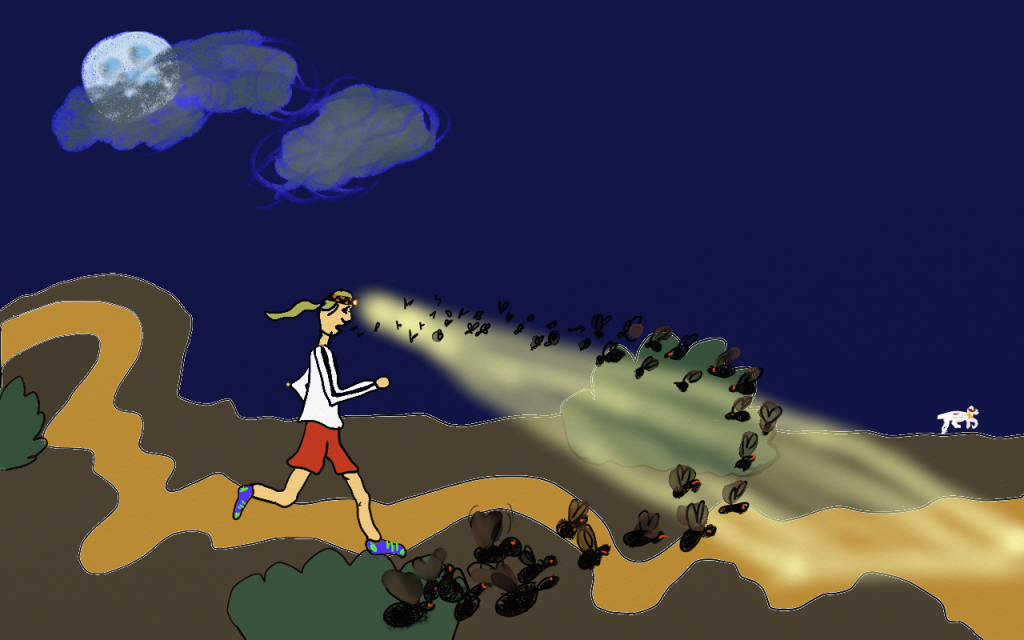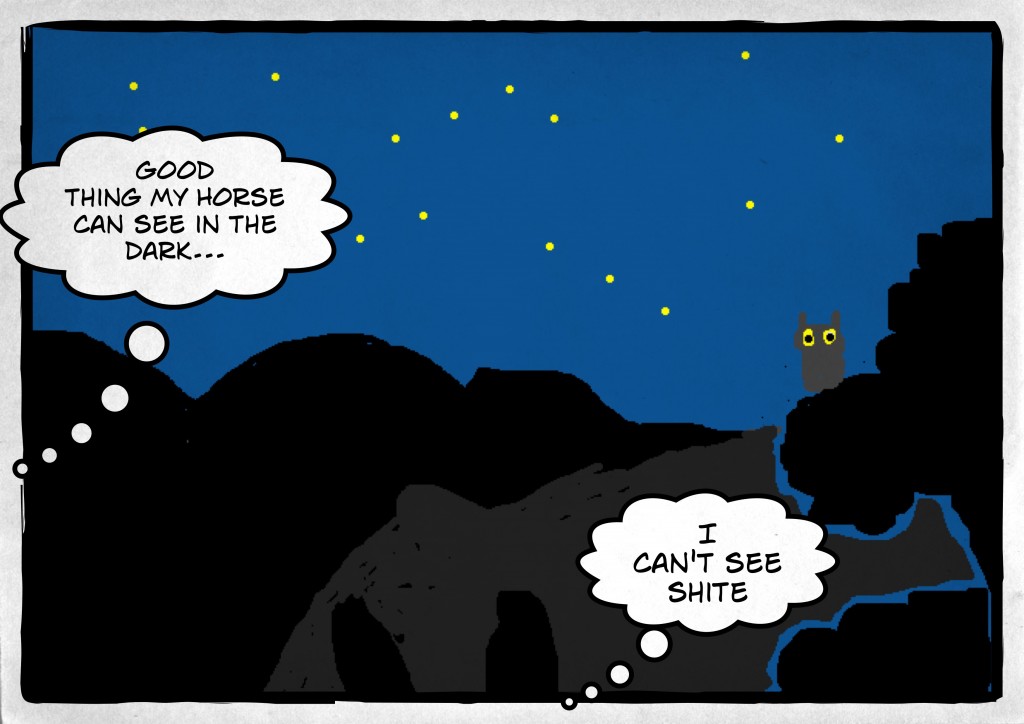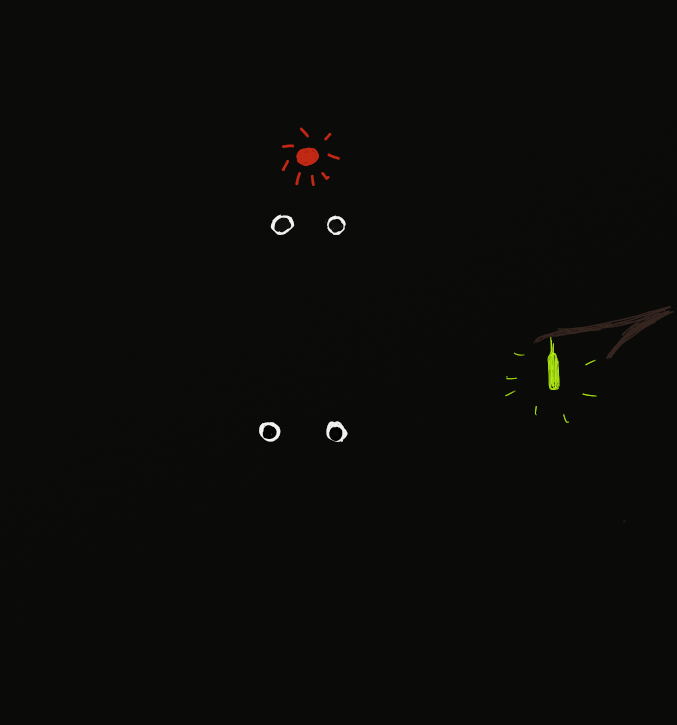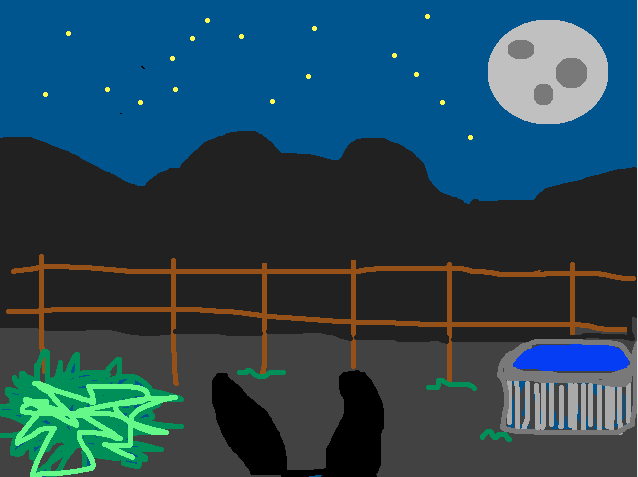Night Tips from a Pilot (and others)
| January 29, 2017 | Posted by Melinda under Equine Endurance |
When I was helping my husband study for his private pilot’s license, I ran across a section about night flying. Some of the recommendations made a lot of sense for riding at night on the trails too.

Unlike running when I usually where a bright headlamp (and sometimes carry a flashlight too) to illuminate the trail before me, riding at night is an exercise of trust in your equine partner.

Using a white light seriously impacts the horse’s night vision – and longer than it impacts ours because there are some physiological differences in their eye that makes the horse eye BETTER at night, but also takes it longer to adapt to the darkness once exposed to light.
Unless you were reading my blog 8 years ago, you might have missed this post where I explain how a horse’s night vision works. (a little aside – that Standardbred team pictured, Gunsmoke and Buttercup, were the BEST. That post was written at a time when *Minx was still alive, ML wasn’t even born, Farley was my back up horse, the blog had a different name, running an ultra was laughably ridiculous, and riding 100 miles was just a dream. ) *Actually, she may have died earlier in the month that post is from, but now I’m too lazy to verify.
So instead of investing in the best new headlight technology, you are going to be going down the trail with a minimum of light. Perhaps a few glowbars attached to the breast collar, a red light headlamp if you need to check something out, and if you are lucky – a moon.
‘Tis the season that even if you aren’t riding 100 miles you may be riding in the dark out of necessity, so here’s my best night tips for riding, gathered from pilot training, practical experience, and other more experienced endurance riders.
- Adjust your eyes for 15-30 min before going out on the trail. Sit in your car, don’t turn on the barn lights, and just wait. This is advice that pilot’s follow before getting in the cockpit.
- If you need to use a light other than red, shut one eye to preserve night vision in your other eye.
- Buy a headlamp that will turn on in red if it was turned off in red.
- Don’t over do the glow bars. Catching them out of the corner of your eye can make you sick and disoriented. Glow bars in the tail can be a good safety measure if you are riding by yourself, but avoid doing it at rides and in groups of people. You can seriously hinder the horses and riders behind you to safely navigate the trail.
- Have a white light with you for emergencies but try not to use it. If you have to turn it on in a non-emergency where you will continue to go down the trail afterwards, be very careful you don’t destroy your horse’s night vision along with your own.
- The hardest part of riding a 100 is if you are sharing the road with traffic in and out of ride camp. The headlights, even if the driver sees you and is courteous enough to switch them off while coming at you, are still taking a toll on your (and your mount’s) vision.
- Even if there is a moon, don’t count on it. Especially riding on mountain trails, the terrain and trees can easily hide it.
- Consider wearing clear safety glasses. Some things are easier to see at night, and some are harder. It’s REALLY hard to see branches at night when riding at a trot. It’s also REALLY hard to see whether wire gates are shut or open in front of you in cattle country. Glasses won’t help with that but I thought I would mention it :).
- Your “preflight” is really important before heading out on the trail. Being in the dark adds one more element of complication, and you really don’t need tack issues to compound it. Everything is more complicated.
- Consider carrying more than one light. I do this when running and it absolutely makes a difference. A flashlight gives you a different picture than a headlamp. Bonus, your headlight can stay on red, and the flashlight direction can be carefully controlled.
- If you are riding a 100, consider using electrical tape to secure the headband of the headlamp to your helmet for extra security.
- Be more conservative. If you are training, pick an easier route. If you are at a ride, consider risks/benefits of your pace.
- Another real life lessoned learned by myself. REALLY familiar trails can look different in the dark and it’s very easy to get turned around. Be on your guard. Double check every turn and trail intersection.
I’m sure I missed a few in my congested cold-induced haze. Speak up in the comments if you have others to add!!!!














This was really interesting to read because where I have done endurance, everyone rides with bright headlamps. Of course this means I have had no night vision in that circumstance, so I never even considered that you could ride without, let alone that it was safer! I have no idea what I can do about all the others riding with lights, but I wish there was something because I get quite bad motion sickness when I can’t see the landscape around me. Great tips, I might try to get some red glasses for the start so I can see when I find a ‘bubble’ to travel in.
I’ll add to your comment for preparation. Get a pair of red goggles or glasses. Wear them for the 20-min you are prepping your night vision or when you have to turn on your white light to preserve your night vision.
Back in my Navy days we used to rig from white to red at least 20-min before periscope depth at night to prepare and then go to black (no lights) at pd. Officers of the Deck wore red goggles when we were operating at night deep in case we had too go up in a hurry.
LOVE this. You covered so many things I do already plus more. Ones I have utilized: I use electrical tape to put my headlamp on my helmet; it has a slider filter for red so it only shines in red; my peripheral vision is stronger in the dark that looking head on, which I utilize constantly; if a car approaches while riding in the dark I’ll put my head up to signal them to cut their lights while closing my eyes as soon as I can to preserve what vision I have; you absolutely cannot count on the moon in the eastern deciduous forests!; and I absolutely wear clear glasses to save myself from sticks in the eye (been there, done that, no thanks!).
Here’s one I meant to mention and forgot. In the dark you can actually see things clearer if you don’t look straight at them. If you are straining to see something ahead of you, trying looking at it with your peripheral vision.
Good tips here, Mel, and some i hadn’t heard before, like keeping one eye closed when using a
bright light. I might add one other- for riders who boot- to either use a strip of fluorescent tape or reflective spray paint to help locate the one(s) that come off at inopportune times.